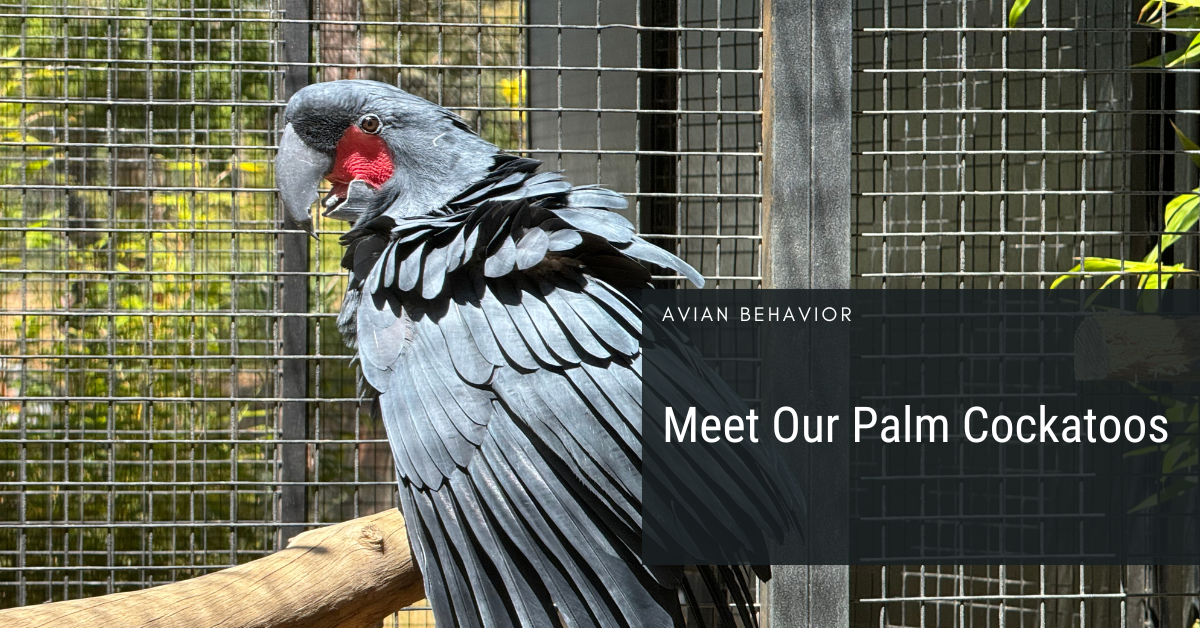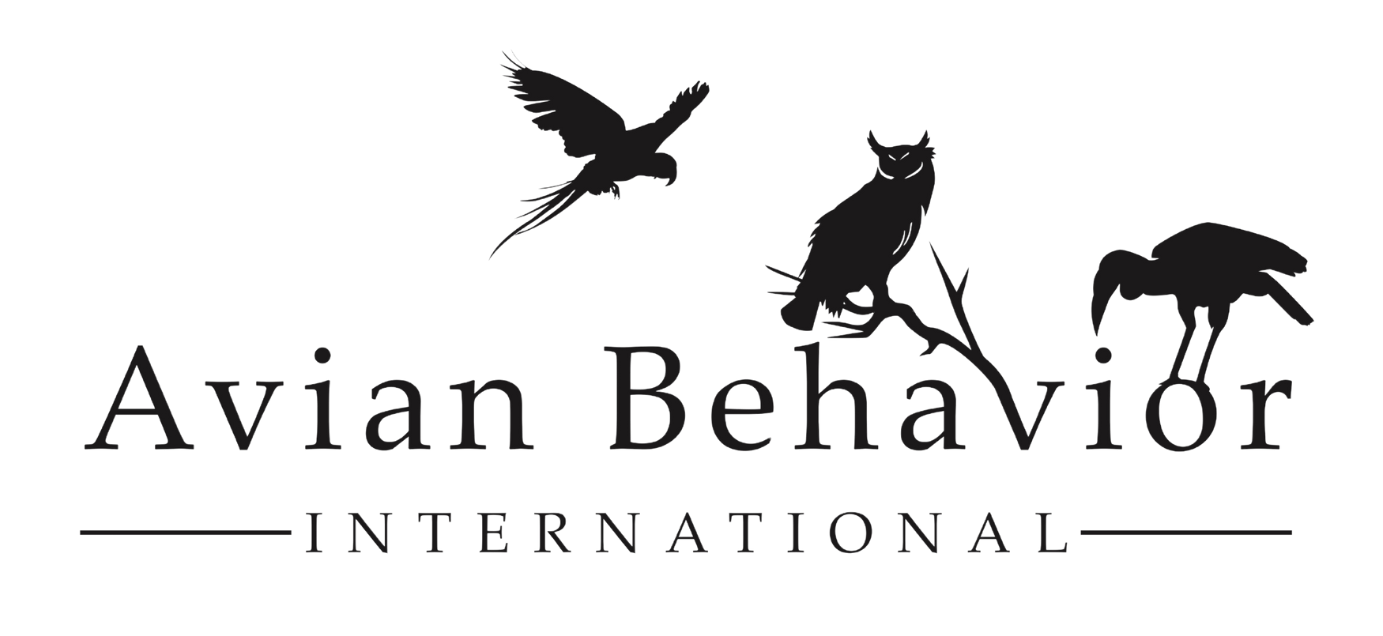
18 Nov Meet Our Palm Cockatoos
Palm cockatoos are in trouble.
In Australia, fewer than 2,000 remain in the wild. They’re listed as Endangered in Queensland and have the lowest breeding success rate of any parrot, females lay one egg every two years, and on average, a breeding pair raises just one chick per decade. Habitat loss from mining, land clearing, and bushfires is destroying the old-growth trees they need to nest in.
Parrots as a genus are among the most endangered birds in the world. They’ve suffered from capture for the pet trade, and now face habitat loss from development, mining, agriculture, and pollution. Our parrots at Avian Behavior Conservancy help us tell this complex conservation story.
Our Cockatoos
Our resident Palm Cockatoos are two of the most impressive parrots you’ll ever meet.
Palm cockatoo beaks are so big they don’t close all the way. The upper and lower mandibles simply don’t fully meet, and yet they can exert tremendous pressure, spinning a macadamia nut in its shell to find the weakness and crack it open with precision.
They’re also one of the only animals that use tools for sound. Males craft drumsticks from branches and beat rhythmically on hollow trees to mark territory and attract mates. Researchers have nicknamed them the “Ringo Starr” of the bird world.
They are also two of the most destructive parrots we’ve met. A casual “test bump” can dent walls, destroy laptops, and demolish furniture. This isn’t aggression, it’s just exploration. When you have a beak that powerful, you don’t have to prove anything. Our palms rarely actually bite people. They don’t need to.
But if you treat them brusquely or rush them along, you might have to endure the foot stomp of indignation – a deliberate, emphatic stomp that says: I noticed that. And I did not appreciate it.
Come Meet Them
Our cockatoos are part of our parrot family at Avian Behavior Conservancy, where we’re home to 11 species. You can meet them during the Free-Flight Macaw Experience or spend an afternoon with them during Picnic with the Parrots.
Come see for yourself why these birds are worth saving.
Check out our upcoming experiences at Avian Behavior Conservancy.

